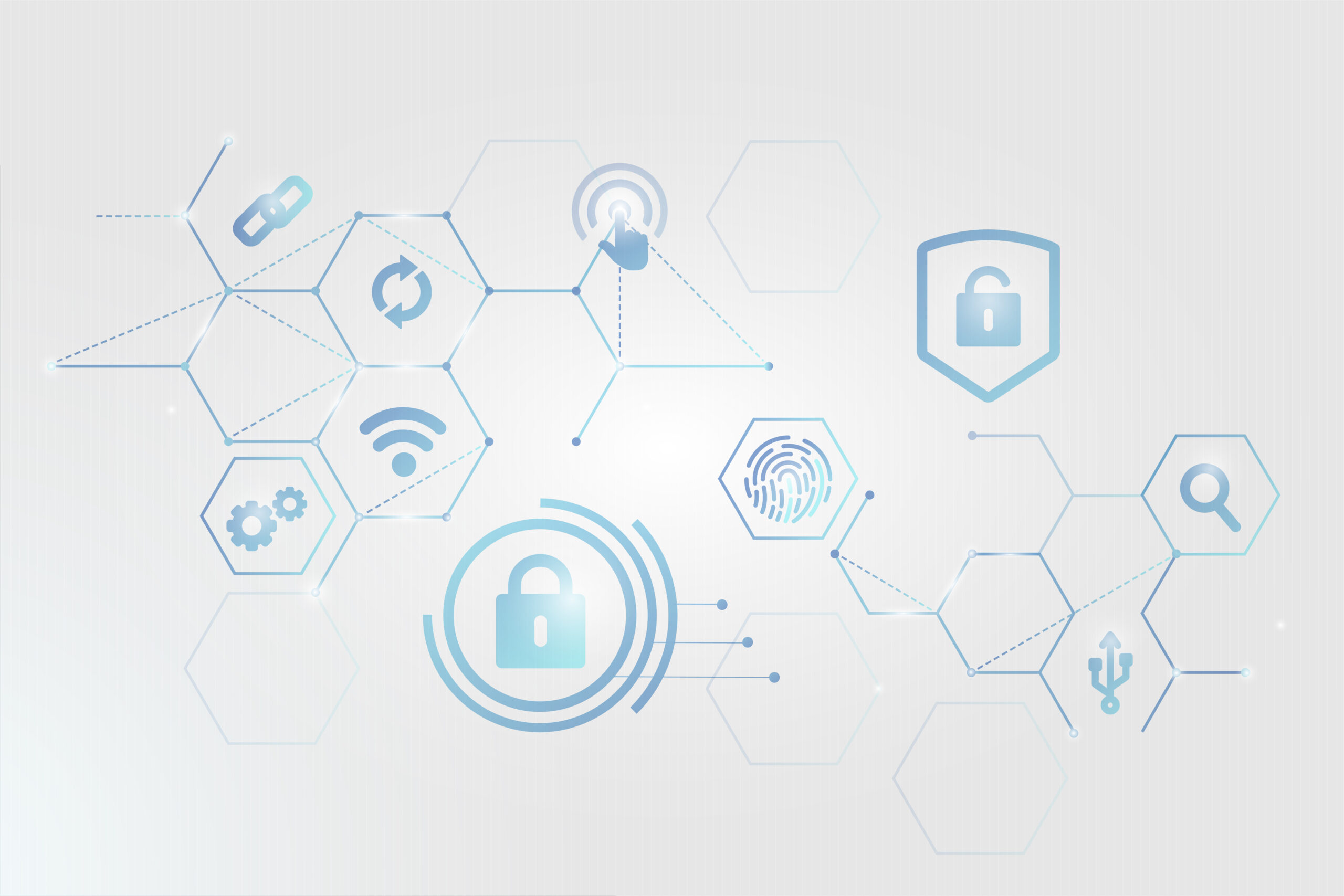Your employees represent both your organization’s greatest cybersecurity asset and its most significant vulnerability. While 95% of successful cyber attacks exploit human error, strategic cybersecurity awareness training transforms your workforce from security liability into your first line of defense.
Comprehensive training programs don’t just educate employees they create a culture of security consciousness that protects your most valuable business assets while delivering measurable risk reduction and ROI.
Related Service: Cybersecurity Pittsburgh
Section 1: Understanding Cybersecurity Awareness Training Fundamentals
In our work with business leaders across industries, we’ve observed that many underestimate how workforce vulnerability directly impacts their bottom line and reputation. Cybersecurity awareness programs provide structured approaches to educating employees about digital threats and protective measures. These programs combine education with practical application to build organizational resilience.
A cyber awareness course delivers targeted cybersecurity training that addresses current cyber threats while teaching employees to recognize suspicious activities. The training content focuses on real-world scenarios, helping staff identify social engineering attempts and implement best practices for data protection. These courses emphasize immediately applicable practical skills.
The distinction between security training and security awareness training lies in scope and application. Traditional security training typically covers technical protocols and compliance requirements, while security awareness training specifically targets human risk factors. CISA guidelines emphasize that effective awareness training transforms employee behavior through ongoing education rather than one-time instruction. Information security programs benefit when organizations integrate both approaches, creating comprehensive protection strategies.
Modern cybersecurity initiatives recognize that human error contributes significantly to successful cyber incidents. By implementing systematic awareness programs, organizations reduce vulnerability while building security-conscious workplace cultures that support long-term risk management objectives.
Related Topic: How Managed Detection and Response Keeps Your Business Safe from Cyber Threats?
Section 2: Essential Framework Components and Implementation Strategy
The most successful initiatives follow a structured three-pillar approach addressing knowledge, behavior, and culture simultaneously. The three main areas in security awareness training encompass technical threats, human factors, and organizational policies. Security awareness training addresses phishing attacks and cyber threats while cybersecurity awareness training focuses on behavioral modification and risk recognition. These areas establish comprehensive protection frameworks addressing digital vulnerabilities and human decision-making.
Creating a cybersecurity awareness program requires systematic planning and resource allocation. Organizations begin by establishing a training program that incorporates role-based training modules tailored to specific job functions. Effective awareness training requires security policy development that establishes clear security expectations employees can follow. Awareness programs should integrate robust platforms delivering consistent messaging. Training programs must prioritize social engineering attack prevention since these attacks specifically exploit human psychology. Successful programs combine cyber security education with physical security protocols, ensuring comprehensive risk coverage across all operational areas.
The three main steps to implementing security awareness include assessment, deployment, and evaluation. Initial assessment identifies vulnerabilities and establishes baseline knowledge levels. The security team then deploys an awareness training program that addresses identified gaps through targeted compliance training modules. Regular evaluation measures program effectiveness while identifying areas requiring enhanced focus.
Implementation success depends on leadership commitment and employee engagement. Organizations achieve optimal results when cyber awareness initiatives receive adequate funding and executive support.
Related Topic: Why Every Growing Business Needs a Virtual CISO (VCISO)?
Section 3: Business Impact and Return on Investment
Our client data consistently shows that organizations investing in workforce protection through awareness training see measurable reductions in both security incidents and associated business costs. Cybersecurity awareness training demonstrates measurable effectiveness through reduced incident rates and improved threat detection. Comprehensive awareness training decreases human error incidents by up to 70%. Security awareness training creates lasting behavioral changes that strengthen overall cybersecurity posture while building employee confidence in threat recognition.
Investment in cyber security education delivers substantial ROI through breach prevention and cost-effective risk management strategies. Organizations implementing systematic awareness programs report significant reductions in security incidents, with mitigation costs far exceeding training investments. Benefits extend beyond immediate threat reduction, creating security-conscious cultures supporting cyber resilience.
Cyber security course costs vary significantly based on program scope and delivery methods. Basic programs range from $50-200 per employee annually, while comprehensive solutions may cost $300-500 per user. Data-driven organizations recognize that course completion rates directly correlate with program effectiveness and user behavior modification. Advanced platforms with personalized learning paths command premium pricing but deliver superior engagement.
Organizations view cyber awareness investments as essential business protection. When properly implemented, these programs generate measurable returns through reduced incident response costs, improved regulatory compliance, and enhanced organizational reputation management.
Related Topic: Cybersecurity Face-Off: Penetration Testing vs. Vulnerability Scanning
Section 4: Training Delivery Methods and Employee Engagement
We recommend starting with baseline assessments to understand current employee knowledge levels and risk behaviors. Modern cybersecurity training incorporates interactive modules, video content, and practical exercises delivered through sophisticated learning platforms. A comprehensive training program combines theoretical knowledge with hands-on scenarios that mirror real workplace situations. Training courses utilize multimedia presentations, case studies, and assessment tools to maintain engagement while ensuring knowledge retention across diverse learning styles.
Employee cyber security training begins with awareness training fundamentals and progresses through advanced threat recognition techniques. Organizations implement security awareness training through structured pathways including phishing simulation and behavioral modification. Simulated phishing campaigns test employee responses while providing immediate feedback and corrective guidance. These practical approaches help staff recognize actual threats while building confidence in their ability to respond appropriately.
Creating effective security awareness training requires developing a customizable training curriculum that addresses organizational needs and industry requirements. Successful programs leverage real-time threat intelligence to keep content current and relevant. Streamlined enrollment processes ensure maximum participation while user experience optimization maintains high completion rates. Organizations can implement practical cybersecurity education strategies that complement formal awareness training programs. The end user benefits from personalized learning paths that adapt to individual knowledge levels and job responsibilities.
Implementation success depends on continuous content updates and performance monitoring to ensure programs integrate seamlessly with existing workflows.
Related Topic: Penetration Testing Services for Business: Stop Threats Before They Strike
Section 5: Technology Platforms and Training Solutions
Based on our evaluation of numerous training platforms, we’ve identified key features that distinguish effective solutions from basic compliance-focused offerings. The best cybersecurity training combines comprehensive awareness training with hands-on practical application delivered through advanced training platforms. Superior programs integrate adaptive learning technologies personalizing content based on knowledge gaps. Leading solutions offer modular approaches addressing foundational concepts and emerging threats through updated curriculum.
Optimal cybersecurity awareness training programs leverage sophisticated learning platforms that incorporate machine learning algorithms to enhance content delivery and assessment accuracy. Top-tier training courses provide interactive simulations covering real-world scenarios while maintaining engagement through gamification and progress tracking. These platforms integrate seamlessly with existing information systems while providing detailed analytics on user performance and knowledge retention rates.
Professionals can develop cyber security expertise through multiple channels including accredited online programs, vendor-specific certifications, and institutional learning environments. Modern platforms address critical topics including authentication protocols, malware detection, and ransomware prevention strategies. These secure online environments provide hands-on laboratories where learners practice identifying cybercrime techniques and implementing protective measures.
Technology-enhanced solutions combine theoretical knowledge with practical application, developing conceptual understanding and operational skills. Effective programs adapt to individual learning styles while maintaining rigorous standards for addressing evolving threats.
Related Topic: From VPNs to ZTNA: Why Zero Trust Is the New Standard for Cybersecurity
Section 6: Organizational Integration and Culture Development
Through our partnerships with leadership teams, we’ve learned that sustainable workforce protection requires commitment that extends from C-suite to front-line employees. Building a strong security culture requires systematic cybersecurity education that transforms organizational mindset and employee behavior. Effective awareness training establishes shared values around data protection while empowering employees to make security-conscious decisions. Comprehensive programs integrate leadership commitment with ongoing reinforcement, making security a natural part of daily operations.
Essential components include threat identification training, policy comprehension, and practical exercises. Security awareness training must address cybersecurity and infrastructure security challenges that affect critical infrastructure operations. Comprehensive programs cover security measures including access controls, data handling protocols, and communication guidelines. These elements work together to create multilayered protection strategies that address both technical vulnerabilities and human factors.
Best practices emphasize continuous improvement through regular incident response exercises and stakeholder engagement initiatives. Organizations should establish clear protocols governing how employees share sensitive information while maintaining operational efficiency. Successful programs align with government and industry standards while addressing sector-specific requirements. National cyber security frameworks provide guidance for developing robust awareness initiatives that support both organizational objectives and broader security goals.
Training programs work best when combining theoretical knowledge with practical application. Regular assessment and feedback mechanisms ensure program effectiveness while identifying areas requiring enhanced focus or modified approaches to maintain relevance and engagement.
Related Topic: The Future of Cybersecurity: Why Endpoint Detection and Response is Non-Negotiable in 2025
Section 7: Program Optimization and Continuous Improvement
The most effective programs treat awareness training as an evolving capability rather than one-time compliance. Optimal cybersecurity awareness training frequency involves quarterly formal sessions supplemented by monthly micro-learning modules and real-time threat updates. Security awareness training should adapt to emerging threat landscapes while maintaining consistent messaging throughout the organization. Effective cyber awareness programs implement continuous reinforcement rather than relying solely on annual training events, ensuring employees retain critical knowledge and develop instinctive security behaviors.
Training duration varies based on organizational needs and employee roles, with basic sessions requiring 30-60 minutes and comprehensive programs extending to 2-4 hours annually. Phishing simulation exercises provide ongoing reinforcement between formal sessions, while security coaching addresses individual knowledge gaps identified through performance assessments. Organizations minimize cyberattacks by implementing bite-sized learning modules maintaining engagement without disrupting productivity. Advanced programs incorporate scenario-based learning building practical phishing defense skills.
Essential cyber security awareness tips include: recognizing suspicious communications, implementing strong authentication practices, maintaining software updates, protecting sensitive data, reporting security incidents promptly, and practicing safe browsing habits. Employees learn about cyber threats through practical exercises demonstrating real-world scenarios. Organizations must systematically address threats and vulnerabilities while encouraging staff to share best practices across departments. Ongoing training should reinforce password security best practices as passwords remain a critical vulnerability point. Regular awareness content updates ensure training remains relevant to current threat environments.
Successful programs integrate cyber defense strategies with ICS training requirements, creating comprehensive protection frameworks. Performance metrics and feedback collection optimize program effectiveness while maintaining engagement.
Related Topic: Data Privacy Impact Assessments: A Must for GDPR & Legal Compliance
Final Thoughts:
Cybersecurity awareness training is more than just following rules—it’s a smart move to protect your business. When your employees understand how to spot and avoid online threats, they help keep your company safe. A good training program teaches them how to stay alert and build safe habits every day. This helps reduce cyberattacks, avoid data loss, and save your company money.
When your team is trained, your whole business becomes stronger. You’ll have better protection, follow security laws more easily, and lower the risk of hackers getting in.
Want to keep your team safe from cyber threats?
Visit Right Hand Technology Group to download our Employee Cybersecurity Training Guide. It includes simple steps, helpful checklists, and proven tips to turn your team into your first line of defense. Start protecting your business today!
Frequently Asked Questions
How can I get cybersecurity training for free?
Free cyber security education is available through government resources, open-source training courses, and vendor-sponsored programs. Organizations like CISA offer comprehensive materials to help professionals learn about cyber threats and defensive strategies. Many universities provide free modules covering essential security concepts.
Can I learn cybersecurity on my own?
Self-directed cybersecurity learning is achievable through structured study plans and hands-on practice environments. The growing cyber workforce includes many self-taught professionals who developed expertise through online resources, virtual laboratories, and practical experience with information systems. However, formal mentorship and professional guidance accelerate skill development significantly.
Does cybersecurity require coding?
Cyber security roles vary in technical requirements, with many positions focusing on policy, risk management, and security measures implementation rather than programming. While coding skills enhance career prospects, professionals can contribute effectively through expertise in authentication protocols, compliance frameworks, and strategic security planning without extensive programming knowledge.
Which skill is best for cyber security?
Critical thinking and analytical problem-solving rank as top cybersecurity skills, enabling professionals to assess threats and develop effective cyber defense strategies. Incident response capabilities prove essential for managing security events, while vulnerability assessment skills help organizations identify and address potential weaknesses before exploitation occurs.
What is the easiest security certification to get?
Entry-level certifications like CompTIA Security+ offer accessible pathways for security career advancement. These programs typically require 40-80 hours of compliance training with straightforward enrollment processes. Course completion rates remain high due to comprehensive study materials and practical examination formats that test real-world security knowledge effectively.











